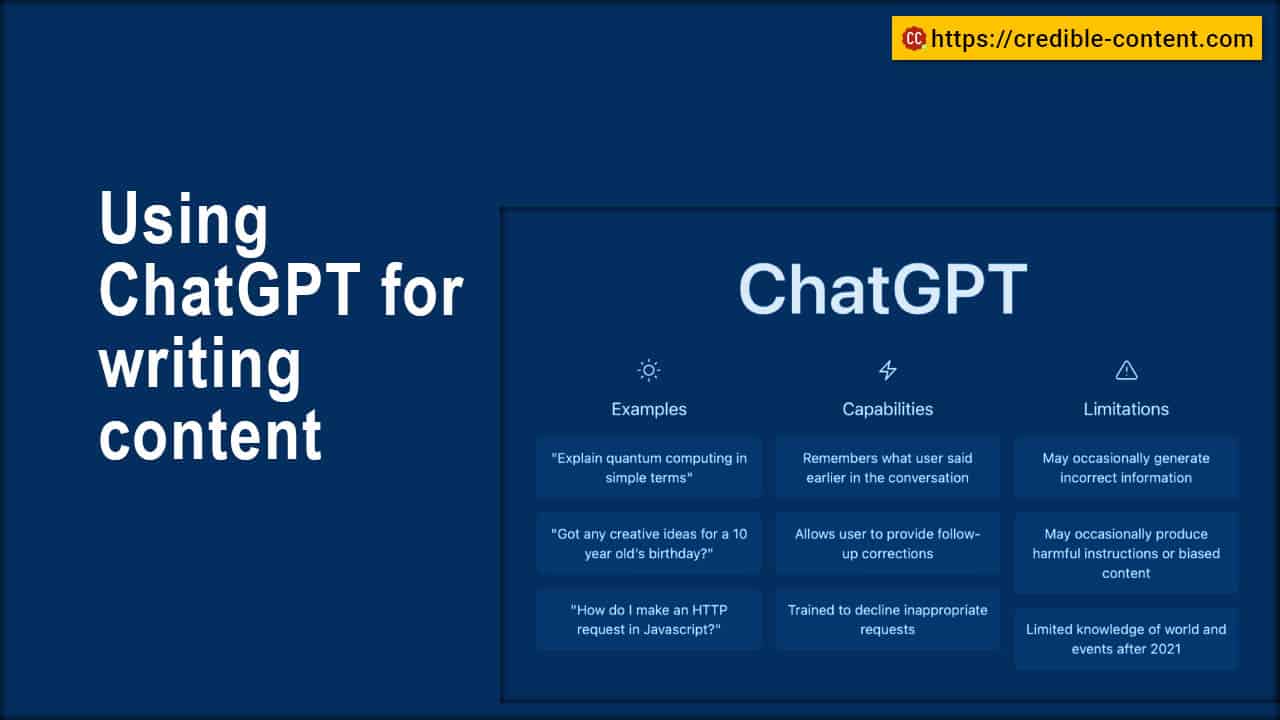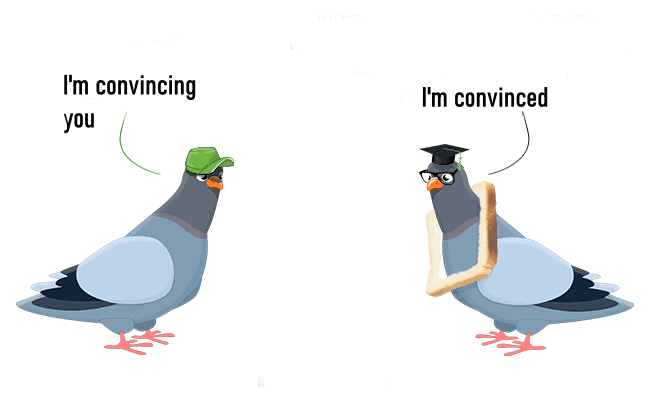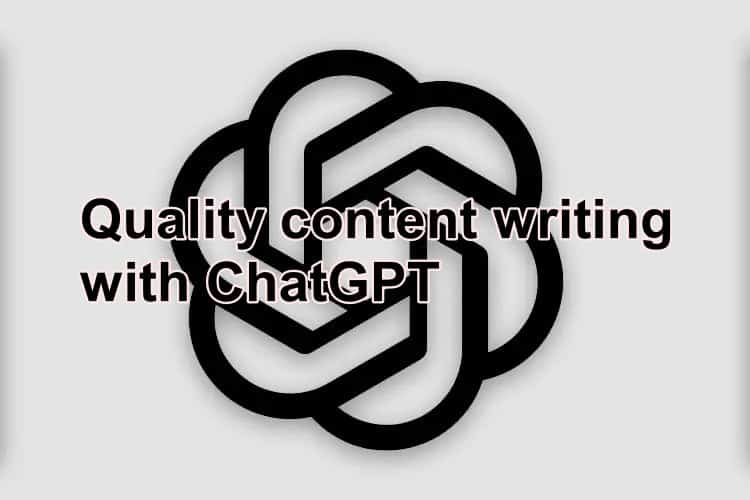Engaging and effective blog posts play a crucial role in capturing readers’ attention and keeping them engaged. Here’s why they are important:
- Grabbing Attention: Engaging blog posts have a captivating opening that hooks readers from the start, enticing them to read further.
- Building Connection: Effective blog posts establish a connection with readers, allowing them to relate to the content and the writer’s perspective.
- Driving Engagement: Well-written blog posts encourage readers to share, comment, and interact with the content, fostering a sense of community.
- Boosting Visibility: Engaging blog posts can attract more traffic to a website or blog, increasing its visibility and reach.
- Converting Readers: When blog posts are compelling and persuasive, they have the potential to convert readers into customers or subscribers.
Connection between Movie Script Writing and Effective Blog Post Writing
While movie script writing and blog post writing may seem like different disciplines, they share certain similarities and can complement each other. Here’s how they are connected:
- Captivating Narratives: Both movie scripts and blog posts aim to captivate their respective audiences through compelling narratives.
- Visual Imagery: Movie scripts use visual descriptions to paint a picture in the viewers’ minds, while blog posts can employ similar techniques to engage readers’ imagination.
- Storytelling Elements: Both mediums utilize storytelling techniques to convey information, evoke emotions, and create a memorable experience for the audience.
Overview of How Movie Script Writing Techniques Can Enhance Blog Posts
Movie script writing techniques can be effectively applied to enhance the quality and impact of blog posts. Here’s an overview of how these techniques can be beneficial:
- Opening Hooks: Using a captivating opening line grabs readers’ attention and encourages them to continue reading.
- Dialogue for Engagement: Incorporating engaging dialogue in blog posts creates a conversational tone, connecting with readers on a deeper level.
- Structural Framework: Applying the structure of acts (Act I, II, and III) helps organize the blog post, leading to a more coherent and engaging narrative.
- Character Development: Building relatable and well-defined personas in blog posts adds depth and emotional connection, making the content more engaging.
- Plot Twists and Surprises: Including unexpected information or presenting fresh perspectives in blog posts adds intrigue and keeps readers engaged.
By leveraging movie script writing techniques, blog posts can become more engaging, captivating, and effective in reaching and resonating with the intended audience.
Creating Captivating Openings – Using Movie Script Writing Techniques to Write Effective Blog Posts
Hooking the readers with a compelling opening line
To capture readers’ attention and make them eager to read your blog post, a compelling opening line is crucial. Consider the following techniques:
- Start with a Provocative Question: Pose a thought-provoking question that piques readers’ curiosity and compels them to seek answers in your blog post.
- Share an Intriguing Anecdote: Begin with a short, captivating story or anecdote that grabs readers’ attention and establishes an emotional connection.
- Use a Surprising Fact or Statistic: Start with an unexpected fact or statistic related to your blog post topic, creating intrigue and motivating readers to learn more.
- Make a Bold Statement: Begin with a bold or controversial statement that challenges common assumptions, sparking readers’ interest and encouraging them to explore further.
Establishing a strong tone and voice from the beginning
Establishing a strong tone and voice from the beginning helps to set the tone for your blog post and create a connection with your readers. This is a vital aspect of movie script writing. Here’s how to achieve it:
- Define Your Writing Style: Determine the tone and voice that align with your blog’s purpose and your personal brand, whether it’s friendly, authoritative, conversational, or humorous.
- Reflect Your Expertise and Personality: Infuse your writing with your unique perspective and expertise, allowing readers to connect with you on a deeper level.
- Engage with Readers: Address your readers directly and create a conversational tone, making them feel like you’re having a one-on-one conversation with them.
- Show Enthusiasm: Convey enthusiasm and passion for the topic to captivate readers and convey your genuine interest in sharing valuable insights with them.
Incorporating visual descriptions to engage readers’ imagination
Drawing inspiration from movie script writing, incorporating visual descriptions in your blog post’s opening can enhance reader engagement. Consider the following techniques:
- Paint a Vivid Picture: Use descriptive language to create visual imagery that allows readers to imagine the scene or scenario you’re describing.
- Appeal to the Senses: Include sensory details such as sights, sounds, smells, tastes, and textures to make your writing more immersive and engaging.
- Utilize Metaphors or Analogies: Employ metaphors or analogies to make abstract concepts more relatable by connecting them to familiar experiences.
- Support with Relevant Visuals: If appropriate, include relevant images, infographics, or videos that enhance the visual appeal and help convey your message more effectively.
By incorporating these movie script writing techniques into your blog post openings, you can hook readers with a compelling line, establish a strong tone and voice, and engage their imagination.
These strategies will make your blog posts more effective, captivating, and memorable, ensuring readers are inspired to continue reading and exploring the valuable insights you have to offer.
Crafting Engaging Dialogue – Mixing Movie Script Writing and Writing Effective Blog Posts
Using conversational tone to connect with readers
Engaging blog posts benefit from a conversational tone that establishes a connection with readers. Here’s how to achieve it:
- Address Readers Directly: Use pronouns like “you” and “we” to create a sense of direct conversation with your readers.
- Avoid Overly Formal Language: Opt for everyday language that feels natural and relatable to your target audience.
- Use Contractions: Incorporate contractions to mirror casual speech and make your writing more conversational.
- Encourage Interaction: Pose questions or prompts throughout the blog post to invite readers to engage with the content and share their thoughts.
Incorporating quotes and anecdotes to add credibility and interest
Quotes and anecdotes can enhance your blog posts by adding credibility, interest, and a personal touch. Consider the following approaches:
- Expert Quotes: Include quotes from reputable sources that support your points and lend credibility to your arguments.
- Personal Anecdotes: Share personal stories or experiences related to the topic to create a connection with readers and make the content more relatable.
- Case Studies: Present real-life examples or case studies that illustrate the concepts you’re discussing and provide concrete evidence of their effectiveness.
Employing dialogue tags and formatting techniques for clarity and flow
Proper use of dialogue tags and formatting techniques ensures clarity and flow in your blog post. Consider the following tips:
- Use Dialogue Tags Appropriately: Include dialogue tags like “said,” “asked,” or “responded” to attribute spoken words to specific individuals, helping readers understand who is speaking.
- Vary Sentence Structure: Mix up sentence lengths and structures to maintain a natural rhythm and avoid monotony in the dialogue.
- Utilize Paragraph Breaks: Create new paragraphs when switching speakers to visually separate the dialogue and improve readability.
- Use Italics or Quotation Marks: Format spoken words using italics or quotation marks to distinguish them from the rest of the text, making it easier for readers to identify dialogue.
Utilize a conversational tone to connect with readers, incorporate quotes and anecdotes for credibility and interest, and employ dialogue tags and formatting techniques to ensure clarity and flow.
These techniques will make your blog posts more dynamic, relatable, and effective in engaging readers and keeping them hooked throughout the content.
Structuring with Act I, II, and III – Movie Script Writing Techniques to Write Effective Blog Posts
Introducing the topic and setting the stage (Act I)
Incorporating the structure of movie script writing into your blog posts can help create a compelling narrative. Here’s how to apply it:
- Set the Stage: Begin with a captivating introduction that grabs readers’ attention and provides an overview of the topic you’ll be discussing.
- Introduce the Characters: Introduce the main ideas or concepts that will be explored throughout the blog post, giving readers a sense of what to expect.
- Establish the Setting: Provide context and background information to familiarize readers with the subject matter and create a foundation for the rest of the post.
- Create Tension or Intrigue: Use storytelling techniques to build anticipation and create curiosity that keeps readers engaged.
Developing the main ideas and building the narrative (Act II)
After setting the stage, it’s time to dive deeper into the main ideas and build a cohesive narrative. Consider the following steps:
- Present Supporting Evidence: Provide supporting facts, examples, and research to strengthen your arguments and enhance the credibility of your blog post.
- Structure the Content: Organize your ideas in a logical and coherent manner, using subheadings or bullet points to break down complex information.
- Transition Smoothly: Use transitional phrases and sentences to guide readers from one idea to another, ensuring a smooth flow of information.
- Build Suspense or Anticipation: Incorporate tension or anticipation by gradually revealing key insights or building up to significant points.
Concluding with a memorable and impactful ending (Act III)
A strong conclusion leaves a lasting impression on readers. Here’s how to wrap up your blog post effectively:
- Summarize Key Points: Recap the main ideas or arguments discussed in your blog post, reminding readers of the valuable insights they’ve gained.
- Leave a Lasting Impression: Craft a memorable ending that resonates with readers, whether through a thought-provoking question, a powerful quote, or a call to action.
- Provide Next Steps or Takeaways: Offer actionable steps or key takeaways that readers can implement or consider after reading your blog post.
- Encourage Engagement: Invite readers to share their thoughts, experiences, or questions in the comments section, fostering interaction and community engagement.
By structuring your blog posts with Act I, II, and III in mind, you can create a compelling narrative that captures readers’ attention, develops ideas effectively, and concludes with a memorable and impactful ending.
What are Act I, II, and III in Movie Script Writing?
Act I: The Setup
- Introduces the audience to the main characters, their goals, and the ordinary world.
- Establishes the central conflict that drives the story.
- Includes the inciting incident, a significant event that disrupts the status quo and sets the story in motion.
- Ends with a major turning point or plot twist known as Plot Point 1.
Act II: The Confrontation
- Forms the bulk of the screenplay, typically covering about 50% of the story.
- Expands on the central conflict and introduces obstacles and challenges for the main character.
- Contains rising action as the main character faces increasing obstacles and tries to overcome them.
- Often includes subplots and additional character development.
- Reaches a midpoint called the Midpoint Twist or Midpoint Reversal, which brings a significant change or revelation to the story.
Act III: The Resolution
- Begins with Plot Point 2, a major turning point that heightens the tension and brings the story to its climax.
- Focuses on the final confrontation between the main character and the primary obstacle or antagonist.
- Features the climax, the highest point of conflict and tension in the story.
- Resolves the central conflict and ties up loose ends.
- Ends with a denouement or resolution, providing closure and showing the aftermath of the story.
Building Character Development – Writing Effective Blog Posts with Movie Script Writing
Creating relatable and well-defined personas in the blog post
Creating relatable personas in your blog posts helps readers connect with the content on a deeper level. Consider the following strategies:
- Understand Your Audience: Research and understand your target audience to create personas that resonate with their interests, values, and challenges.
- Develop Detailed Profiles: Create well-defined personas by giving them names, demographics, and characteristics that align with your target audience.
- Address Their Pain Points: Identify the pain points, needs, and desires of your personas, and tailor your blog post to address them effectively.
- Use Personalization: Use pronouns like “you” and “we” to address your personas directly, making them feel seen and understood.
Utilizing storytelling techniques to establish emotional connection
Storytelling techniques can help establish an emotional connection with readers, making your blog posts more engaging and memorable. Consider the following approaches:
- Incorporate Anecdotes: Share personal stories or anecdotes related to the topic that evoke emotions and resonate with readers’ experiences.
- Appeal to Emotions: Use descriptive language and imagery to evoke emotions such as joy, empathy, curiosity, or inspiration in your storytelling.
- Show Vulnerability: Share your own struggles, failures, or challenges, allowing readers to relate to your journey and feel connected to your content.
- Use Visual Language: Paint vivid pictures with your words, engaging readers’ senses and immersing them in the story you’re telling.
Evolving the characters throughout the post to maintain interest
To maintain readers’ interest, it’s important to evolve the characters or personas throughout your blog post. Consider the following techniques:
- Unveil New Information: Introduce new insights, facts, or perspectives gradually, keeping readers engaged and curious to learn more.
- Show Growth or Transformation: Demonstrate how the characters or personas evolve or overcome challenges, providing inspiration and encouragement for readers.
- Ask Thought-Provoking Questions: Pose questions throughout the blog post that prompt readers to reflect, encouraging them to think deeper about the topic and stay engaged.
- Provide Actionable Steps: Offer practical advice or actionable steps that allow readers to apply the information you’ve shared and experience their own growth or transformation.
By focusing on building character development in your blog posts, you can create relatable personas, establish emotional connections through storytelling, and keep readers engaged by evolving the characters or personas throughout the post.
Incorporating Plot Twists and Surprises – Effective Blog Post Writing with Movie Script Writing
Adding unexpected information or perspectives to intrigue readers
Incorporating plot twists and surprises in your blog posts can captivate readers and keep them engaged. Consider the following strategies:
- Research Uncommon Facts: Uncover lesser-known or surprising facts related to your topic and present them in a way that sparks readers’ curiosity.
- Present Unconventional Perspectives: Challenge conventional wisdom by introducing alternative viewpoints or fresh perspectives that encourage readers to think critically.
- Share Unexpected Stories: Tell stories or anecdotes that deviate from the expected narrative, surprising readers and grabbing their attention.
Challenging conventional wisdom and presenting fresh insights
To make your blog posts more impactful, it’s important to challenge conventional wisdom and provide fresh insights. Consider the following techniques:
- Conduct In-Depth Research: Dive deep into your topic to uncover unique insights or perspectives that may contradict commonly held beliefs or ideas.
- Provide Data and Evidence: Support your arguments with data, research findings, or expert opinions that shed new light on the topic.
- Offer a New Angle: Approach the subject matter from a different angle or provide a unique interpretation to offer readers fresh insights and a fresh perspective.
Using cliffhangers or suspenseful elements to keep readers engaged
Incorporating cliffhangers and suspenseful elements in your blog posts can create anticipation and maintain reader engagement. Consider the following methods:
- Tease Upcoming Information: Foreshadow upcoming revelations or insights, building anticipation and motivating readers to continue reading.
- Pose Intriguing Questions: Leave readers with unanswered questions or dilemmas that they can only resolve by reading further.
- Utilize Storytelling Techniques: Craft narratives that unfold gradually, using suspenseful elements such as tension, mystery, or unexpected turns to keep readers hooked.
By adding unexpected information or perspectives, challenging conventional wisdom, and using cliffhangers or suspenseful elements, you’ll create an engaging reading experience that captivates your audience and keeps them eagerly anticipating your next blog post.
Employing Visual Imagery – Effective Blog Post Writing with Movie Script Writing
Using vivid and descriptive language to paint a picture in readers’ minds
To engage readers and make your blog posts more impactful, employ vivid and descriptive language that paints a vivid picture. Consider the following techniques:
- Choose Descriptive Adjectives: Select strong and specific adjectives that evoke sensory details and create a visual image in readers’ minds.
- Utilize Sensory Language: Appeal to readers’ senses by incorporating descriptions related to sight, sound, taste, touch, and smell.
- Paint a Scene: Set the stage by providing detailed descriptions of the environment, characters, or objects to immerse readers in the narrative.
- Show, Don’t Tell: Instead of simply stating information, use descriptive language to show readers what is happening or what something looks like.
Incorporating metaphors, similes, and analogies to enhance understanding
Metaphors, similes, and analogies can enhance understanding and make your blog posts more relatable. Consider the following techniques:
- Metaphors: Use metaphors to compare two different things, creating a vivid image and allowing readers to grasp abstract concepts more easily.
- Similes: Employ similes to make comparisons using “like” or “as,” providing relatable references that help readers comprehend complex ideas.
- Analogies: Draw analogies by relating unfamiliar concepts to familiar ones, enabling readers to connect the dots and grasp new information effectively.
- Use Concrete Examples: Provide real-world examples or visual references to further illustrate the ideas you’re presenting.
Including relevant visuals or multimedia to support the written content
Incorporating visuals or multimedia elements alongside your written content can enhance the overall impact of your blog posts. Consider the following approaches:
- Images: Include relevant and high-quality images that complement and visually represent the ideas or concepts discussed in your blog post.
- Infographics: Create visually appealing infographics that present information or data in a clear and engaging manner.
- Videos: Embed videos that further explain or demonstrate the topic, adding a dynamic and interactive element to your blog post.
- Slideshows or Presentations: Use slideshows or presentations to break down complex information or provide step-by-step guides.
By employing visual imagery inspired by movie script writing, you can make your blog posts more engaging and memorable.
Use vivid and descriptive language to paint a picture in readers’ minds, incorporate metaphors, similes, and analogies to enhance understanding, and include relevant visuals or multimedia to support the written content. These techniques will help create a visually rich and captivating reading experience for your audience.
Editing and Polishing – Effective Blog Post Writing and Movie Script Writing
Reviewing and refining the blog post for clarity and coherence
To ensure your blog posts are effective, it’s crucial to review and refine them for clarity and coherence. Consider the following editing strategies:
- Read Aloud: Read your blog post aloud to identify any awkward or confusing sentences, ensuring that the content flows smoothly.
- Simplify Complex Language: Replace complex jargon or technical terms with simpler language that is accessible to a wide range of readers.
- Check for Consistency: Ensure that the tone, style, and voice remain consistent throughout the blog post to maintain coherence.
- Clarify Concepts: Revise any unclear or ambiguous statements, providing additional explanations or examples as needed.
Eliminating unnecessary information and maintaining a focused narrative
To create effective blog posts, it’s important to eliminate unnecessary information and maintain a focused narrative. Consider the following techniques:
- Trim Excess Content: Remove any information or details that are not essential to the main message or narrative of your blog post.
- Stick to the Point: Keep your writing focused on the topic at hand, avoiding tangents or unrelated information that may distract readers.
- Streamline Transitions: Ensure that your transitions between paragraphs and sections are smooth and logical, supporting the overall flow of the post.
- Prioritize Key Information: Identify the most important points or arguments and give them prominence, allowing readers to grasp the main ideas easily.
Paying attention to pacing, rhythm, and overall readability
Paying attention to pacing, rhythm, and overall readability is crucial for writing effective blog posts. Consider the following tips:
- Vary Sentence Lengths: Use a mix of short and long sentences to create a rhythm that keeps readers engaged and prevents monotony.
- Break up Text: Utilize subheadings, bullet points, and paragraphs to break up the text and make it easier to scan and digest.
- Use Transition Words: Employ transitional words and phrases (e.g., “however,” “in addition,” “therefore”) to guide readers smoothly between ideas and sections.
- Proofread Carefully: Check for grammatical errors, typos, and punctuation mistakes, ensuring that your blog post is polished and professional.
Review and refine your content for clarity and coherence, eliminate unnecessary information, and pay attention to pacing, rhythm, and overall readability.
These strategies will help you create highly effective and engaging blog posts that resonate with your audience.
Well-crafted blog posts have the potential to significantly impact reader engagement.
By employing movie script writing techniques, you can captivate readers from the beginning, establish a strong connection, deliver valuable insights, and leave a lasting impression.
Engaging openings, compelling dialogue, structured narratives, relatable characters, surprising twists, vivid imagery, and polished writing all contribute to an enhanced reader experience, leading to increased engagement, shares, and a loyal readership.








